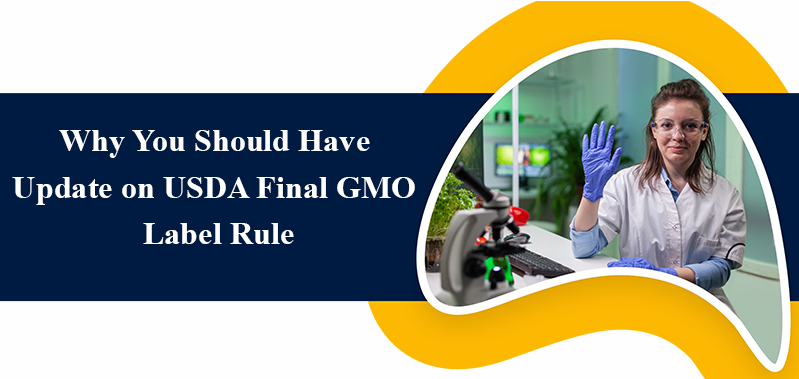
Why You Should Have Update on USDA Final GMO Label Rule
Genetically modified foods (GMOs) have been part of our diets since the 1990s, but it was only last year that they began requiring labels. The U.S. Department of Agriculture (USDA) claims that the implementation of this labeling program has been “successful,” yet experts argue that consumers are not even noticing these labels.This labeling became mandatory on January 1, 2022, after the USDA rolled out the National Bioengineered Food Disclosure Standard. Despite the USDA's claim of success, many consumers remain unaware of these labels.
The term "bioengineered" replaced the more commonly known "GMO," causing a stir among food retailers and nonprofits. These groups sued the USDA, arguing that the term was confusing and misleading. Although a federal court upheld most of the law, the controversy highlighted the divide in opinions over labeling. Consumer groups and grocery stores have criticized the labels for being too small and confusing. Experts, like those at Consumer Reports, suggest that the unfamiliar term "bioengineered" and the tiny print do little to inform consumers.
The Final GMO Label Rule is designed to enhance transparency in the food supply chain. By requiring clear labeling of bioengineered foods, the rule addresses growing consumer demand for more information about the food they consume. In an era where consumers are increasingly concerned about food origins, production methods, and potential health implications, clear labeling builds trust. Businesses that comply with the labeling requirements can differentiate themselves as transparent and consumer-focused, fostering stronger relationships with their customers.
In a competitive market, staying ahead of regulatory changes can be a significant advantage. Companies that quickly adapt to the USDA Final GMO Label Rule can position themselves as industry leaders. This early compliance can be leveraged as a marketing tool to attract consumers who prioritize transparency and health. Additionally, it can provide a competitive edge over slower-to-adapt competitors, helping businesses capture a larger market share.
Implementation and Compliance
Since the mandatory labeling began, enforcement relies on consumer complaints. The USDA believes its outreach has been successful and claims that industry feedback has been positive regarding the standard’s manageability.
The USDA mandates labeling for thirteen crops and foods, including genetically modified apples and potatoes. However, a loophole exists for products like corn oil and sugar from GMO crops, as these are stripped of detectable modified genetic material, thus bypassing the disclosure requirement. This inconsistency adds to the confusion surrounding what qualifies for labeling.
The Final GMO Label Rule contributes to consumer health and safety by providing essential information about the food they consume. By disclosing bioengineered ingredients, the rule allows consumers to make choices that align with their health concerns and dietary preferences. This can lead to better overall public health outcomes as consumers can avoid ingredients they may be allergic to or prefer not to consume.
The USDA Final GMO Label Rule also plays a critical role in consumer education. By providing clear information about bioengineered foods, the rule helps consumers make informed dietary choices. This transparency can lead to increased demand for non-GMO or organic products, benefiting producers who cater to these markets. Staying updated on the rule helps businesses anticipate shifts in consumer preferences and adjust their product offerings accordingly.
Looking Forward
As the debate continues, the demand for clear and meaningful labels grows. The USDA Final GMO Label Rule represents a significant step toward greater transparency and consumer empowerment in the food industry. For businesses, staying updated on this rule is not just a matter of legal compliance but also a strategic advantage. By understanding and implementing the requirements of the rule, companies can enhance consumer trust, stay competitive, and tap into new market opportunities. Moreover, the rule's emphasis on clear labeling supports consumer health and safety, fostering a more informed and health-conscious public.




